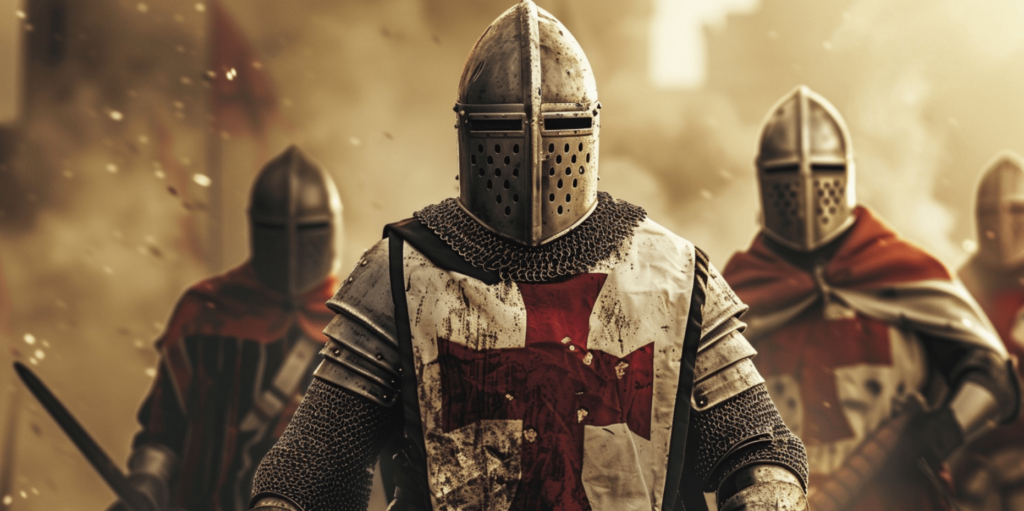Although the times of the knights are long gone, the image of a hero with a sword remains popular throughout the centuries. And rightfully so! Knights embody the virtues we, humans, respect the most, such as loyalty, nobility, bravery, and protectiveness, hence this archetype will never go out of fashion.
Of course, there may be some exceptions portraying knights in a purposely exaggerated, silly way, like it happened with the main character in “Don Quixote”, an epic novel written by Miguel de Cervantes, but the tradition of depicting knights as strong and heroic figures prevails.
That’s why, even in modern fiction the trope of saving a damsel in distress remains popular, no matter what setting it is – medieval, modern, or even futuristic. Although today we often call such characters “superheroes”, there’s no denying that it’s just a new version of the same-old knights.
Why Is It So Popular?
In all times, it just happened so that art reflects the reality artists live in. Painters, musicians, and poets of all times use their craft to show the way they see life and express deep desires. People always need a hero. Whether it’s a medieval poet writing an ode to a mighty warrior or a writer from papersowl.com working on an elaborate analysis of knights in medieval literature, they can’t help but admire these strong fighters with unwavering morals, especially back then.
Although not as savage and gory as some might think, the Middle Ages were hard times to live in. Wars, plague epidemics, and waves of famine would constantly sweep across continents, taking the lives of hundreds of thousands. With that said, one also shouldn’t forget about religious perturbations. As paganism and other beliefs were losing their popularity, the rise of the Inquisition happened rapidly, leaving many people in need of a hero to rely on in times of such dramatic changes.
No wonder a strong figure of a knight in shining armor emerged and became a go-to archetype for writers to use in their stories. Some of them were even based on real people (although, in literature, their virtues were often highly exaggerated).
When Did Knights Start Appearing in Literature?
The appearance of knights in literature can be traced back to the early Middle Ages, around the 12th century. It’s hard to tell the exact time since finding reliable sources is as hard as it is to read reviews on reddit. But one of the first pioneers is considered to be the knight in Chaucer’s “Canterbury Tales”.
The prototype for the character was an English mercenary John Hawkwood, whom the author personally knew and simply ennobled in his works. “The Knight’s Tale” is probably the most famous story from “The Canterbury Tales” as it mixes a classic story with lessons in gallantry, and tells about the dangers of unrequited love and family quarrels.
The knight from Chaucer’s stories traveled a lot and became known for his strength. But at the end of his career, this warrior became devout, which is why he travels with his fellow travelers to Canterbury to venerate the relics of one of the saints.
In Chaucer’s stories, knights were shown to be brave, possessing the whole kit of traditional virtues. However, such depiction often leads to the creation of boring, one-dimensional characters readers can’t relate to since the knights are described as perfect people with no human vices at all.
Were All Knights Immune to Vices?
Fortunately, no. For example, Sir Lancelot, who is arguably the most accomplished and complex knight in Arthurian mythology, is a paradoxical character who manifests a combination of virtues and vices. It is his prowess on the battlefield that makes Lancelot famous: he is regarded as the greatest swordsman to ever exist.
Moreover, Lancelot is dedicated to chivalric ideals of honor and justice. He is the archetypal bearer of knightly virtue: in all that he undertakes he is loyal, just, and kind, and he stands for all that is honorable and good. He is so noble that If he were your classmate, he would probably never dare to ask Google “Is papersowl legit?” because the thought of delegating his assignment to someone else would be too hard for him to bear.
However, while committed to his vows of faith, Lancelot is drawn into an affair with Guinevere, Arthur’s wife, torturing him with conflicting loyalties. The pangs of conscience, and the anguish of passion, are part of what made this literary hero so compelling and, in the end, so human. Lancelot’s personality is enhanced, and deepened, by his conflicted life and his extreme, often morally questionable, behavior.
As you can see, the archetype of a medieval knight is a symbol of chivalry, embodying the ideals of honor, bravery, and loyalty. It is a symbol of courage, bravery, and the desire to overcome all difficulties in your path, armed with fortitude and resilience.
Such a powerful character will always remain relevant, so no wonder the chivalric romance was particularly popular between the twelfth and sixteenth centuries and continues to exist up to this day, although in the form of superheroes and other heroic characters.

